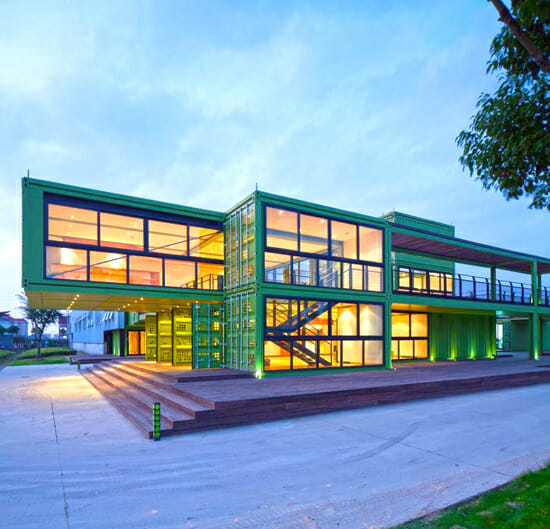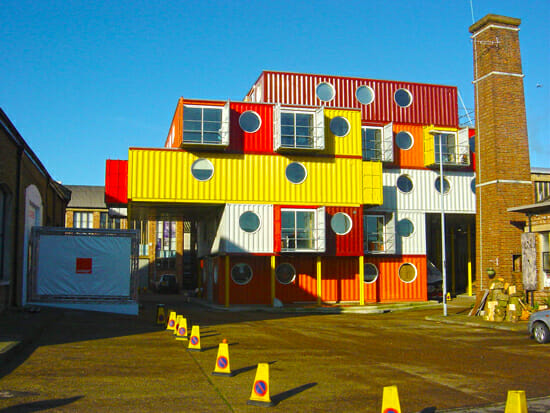Architecture matures with man’s maturity. New contemporary architectural phenomena are the word-of–mouth in today’s world. And to give an in-depth, thoughtful look at the history, evolution and current state of such contemporary container architecture is a book by Gestalten, named the Container Atlas: A Practical Guide to Container Architecture. And this is considered as one of the most informative, visually stimulating collection of examples of this contemporary architectural phenomenon.

At the start of the book, after an introduction into container architecture, the author, Gestalten, takes the reader into the early 20th century. A former trucking entrepreneur, Malcolm McLean began to push for the implementation of standardized containers for universal freight transport, and through to the steel boxes’ role in US Army logistical operations of World War II and that according to the author is the start of a genre in architecture.
And as the book progresses, the author takes the reader in-depth into the functional uses of such structures. According to him, since the containers are accessible and functional, they are extremely suitable and effectively useful for charitable organizations funded by donations, such as Melbourne’s Children’s Activity Centre (Phooey Architects), which is made out of four shipping containers transformed into a social facility for children. Similarly, it could also apply as building blocks that form the supporting structure for the exhibit hall and as transport containers for building elements and for the display specimens themselves. He aids his idea with the example of a mobile PUMA salesroom by LOT-EK, consisting of 24 shipping containers stacked to form a three-story building.

The book is a leader in its section of work. It not only digresses through similar works of architecture, but it features container structures used as pop-up stores and temporary exhibits as well as sophisticated housing and office spaces. These structures provoke and inspire while setting new standards in functionality and aesthetics. And as an essential break within the book, the provision of breathtaking photos of the architecture is an icing on the cake. Because it documents plans, describes associated costs, and suggests concrete solutions for common problems, it is a practical reference for architects, planners, and cultural activists as well as event and marketing managers, to guide them in deciding what types of containers are best suited to their upcoming projects.

Soon the reader is found inspecting plans and associated costs for each one of these container projects. Another standout feature of the book are the gorgeous photos of existing container architecture, and the book also suggests solutions for common problems in the arena, making it a reliable reference for everyone from professional architects and planners to marketing managers and the general public.

